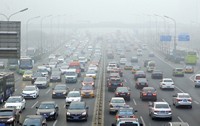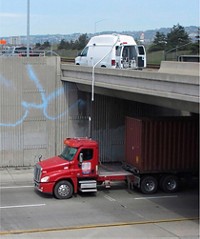Advertisement
Grab your lab coat. Let's get started
Welcome!
Welcome!
Create an account below to get 6 C&EN articles per month, receive newsletters and more - all free.
It seems this is your first time logging in online. Please enter the following information to continue.
As an ACS member you automatically get access to this site. All we need is few more details to create your reading experience.
Not you? Sign in with a different account.
Not you? Sign in with a different account.
ERROR 1
ERROR 1
ERROR 2
ERROR 2
ERROR 2
ERROR 2
ERROR 2
Password and Confirm password must match.
If you have an ACS member number, please enter it here so we can link this account to your membership. (optional)
ERROR 2
ACS values your privacy. By submitting your information, you are gaining access to C&EN and subscribing to our weekly newsletter. We use the information you provide to make your reading experience better, and we will never sell your data to third party members.
Environment
Tail-Pipe Cleanup
Sensing technology is key to reducing pollutants from cars, study shows
by Rachel Petkewich
February 11, 2008
| A version of this story appeared in
Volume 86, Issue 6
DRAMATIC REDUCTIONS in three tail-pipe pollutants from cars on U.S. roads over the past 10 years are directly related to improvements to onboard emissions control systems, not gas reformulation or mandatory inspection and maintenance programs, according to a new study by roadside test pioneers Gary A. Bishop and Donald H. Stedman at the University of Denver (Environ. Sci. Technol., DOI: 10.1021/es702413b).
The study focused on carbon monoxide (CO), hydrocarbons (HC), and nitrogen oxides (NOx), which are known to contribute to smog formation in urban areas. NOx emissions also affect global levels of tropospheric ozone. The researchers found that emission rates in Chicago, Denver, Los Angeles, and Phoenix have dropped by 56–71% for CO, 27–63% for HC, and 48–68% for NOx since 1997.
The four cities use fuel that has been chemically altered to lower the potential for forming ozone or toxic compounds in the air, and they require vehicle emissions inspection and maintenance. But the researchers also observed similar reductions in Tulsa, Okla., and Omaha, Neb.—cities that have never participated in inspection programs or fuel reformulation standards.
Bishop and Stedman therefore conclude that lowering auto emissions depends largely on automobiles' myriad sensors and other computerized diagnostic equipment that monitor exhaust and control combustion in the engine. In their study, they noted a particularly significant decrease in emissions between vehicles of model years 1995 and 1996. Additional oxygen sensors to monitor air-to-fuel mixtures on a cylinder-by-cylinder basis were first introduced by automakers in 1996 models, Bishop says.
The researchers used spectrometers set up on roads to collect data from moving cars in the six cities in their study. In addition, they captured an image of each car's license plate to identify make and model.
This long-term data set for individual cars—not just fleet averages—over 10 years at multiple sites is new, unique, and valuable for understanding atmospheric chemistry, Robert Harley, an environmental engineer at the University of California, Berkeley, says.
The team's on-road sensing provides real-world data from the general driver population, not just numbers from the obedient drivers who get required inspections, says Doug Lawson, an atmospheric chemist at the National Renewable Energy Laboratory in Colorado.




Join the conversation
Contact the reporter
Submit a Letter to the Editor for publication
Engage with us on Twitter